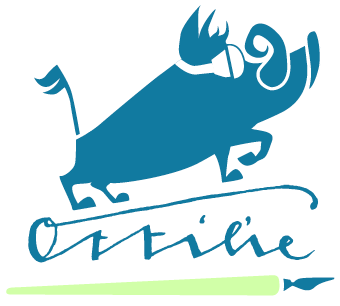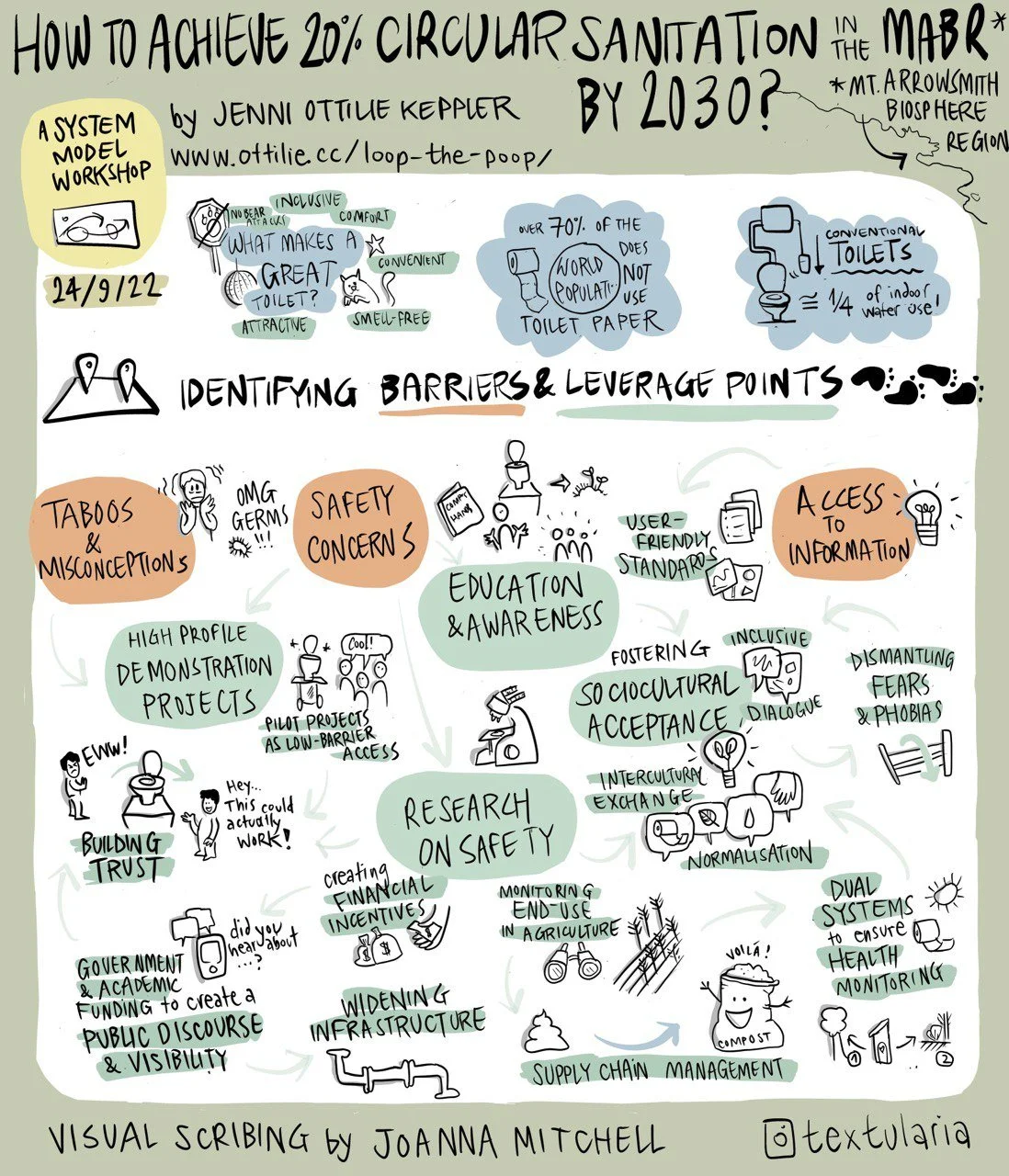Graphic Recording of Workshop Focus Points by Joanna Mitchell
![Circular Sanitation in the MABR - Evaluation Workshop Report – September 2022[FINAL]_02_Seite_01.png](https://images.squarespace-cdn.com/content/v1/5239a831e4b0a981d2a0789d/1673996078143-GRW9WNNOGP9NHGYJ3EYL/Circular+Sanitation+in+the+MABR+-+Evaluation+Workshop+Report+%E2%80%93+September+2022%5BFINAL%5D_02_Seite_01.png)
![Circular Sanitation in the MABR - Evaluation Workshop Report – September 2022[FINAL]_02_Seite_23.png](https://images.squarespace-cdn.com/content/v1/5239a831e4b0a981d2a0789d/1673995988464-HWH0CSGAJW07ZVM700UP/Circular+Sanitation+in+the+MABR+-+Evaluation+Workshop+Report+%E2%80%93+September+2022%5BFINAL%5D_02_Seite_23.png)
![Circular Sanitation in the MABR - Evaluation Workshop Report – September 2022[FINAL]_02_Seite_22.png](https://images.squarespace-cdn.com/content/v1/5239a831e4b0a981d2a0789d/1673995944315-J2GCO86KVEJJN65QPT6X/Circular+Sanitation+in+the+MABR+-+Evaluation+Workshop+Report+%E2%80%93+September+2022%5BFINAL%5D_02_Seite_22.png)
![Circular Sanitation in the MABR - Evaluation Workshop Report – September 2022[FINAL]_02_Seite_02.png](https://images.squarespace-cdn.com/content/v1/5239a831e4b0a981d2a0789d/1673996055001-EG1VBFE8CH0Y2ZYGCJIK/Circular+Sanitation+in+the+MABR+-+Evaluation+Workshop+Report+%E2%80%93+September+2022%5BFINAL%5D_02_Seite_02.png)
![Circular Sanitation in the MABR - Evaluation Workshop Report – September 2022[FINAL]_02_Seite_03.png](https://images.squarespace-cdn.com/content/v1/5239a831e4b0a981d2a0789d/1673996058033-Z509VMR9IRR2OAG0FF0M/Circular+Sanitation+in+the+MABR+-+Evaluation+Workshop+Report+%E2%80%93+September+2022%5BFINAL%5D_02_Seite_03.png)
![Circular Sanitation in the MABR - Evaluation Workshop Report – September 2022[FINAL]_02_Seite_04.png](https://images.squarespace-cdn.com/content/v1/5239a831e4b0a981d2a0789d/1673996083636-1RZGCSVNONVXTVH3U1Y1/Circular+Sanitation+in+the+MABR+-+Evaluation+Workshop+Report+%E2%80%93+September+2022%5BFINAL%5D_02_Seite_04.png)
![Circular Sanitation in the MABR - Evaluation Workshop Report – September 2022[FINAL]_02_Seite_05.png](https://images.squarespace-cdn.com/content/v1/5239a831e4b0a981d2a0789d/1673996081111-YA6M10D1E24M2K5AJ9QQ/Circular+Sanitation+in+the+MABR+-+Evaluation+Workshop+Report+%E2%80%93+September+2022%5BFINAL%5D_02_Seite_05.png)
![Circular Sanitation in the MABR - Evaluation Workshop Report – September 2022[FINAL]_02_Seite_06.png](https://images.squarespace-cdn.com/content/v1/5239a831e4b0a981d2a0789d/1673996083894-CZPG45KKQTIXDVV3KSED/Circular+Sanitation+in+the+MABR+-+Evaluation+Workshop+Report+%E2%80%93+September+2022%5BFINAL%5D_02_Seite_06.png)
![Circular Sanitation in the MABR - Evaluation Workshop Report – September 2022[FINAL]_02_Seite_07.png](https://images.squarespace-cdn.com/content/v1/5239a831e4b0a981d2a0789d/1673996084551-6I1MQ1JU7267FUC1IHPH/Circular+Sanitation+in+the+MABR+-+Evaluation+Workshop+Report+%E2%80%93+September+2022%5BFINAL%5D_02_Seite_07.png)
![Circular Sanitation in the MABR - Evaluation Workshop Report – September 2022[FINAL]_02_Seite_08.png](https://images.squarespace-cdn.com/content/v1/5239a831e4b0a981d2a0789d/1673996088987-DESWIDZP4FQDC6TOPAWX/Circular+Sanitation+in+the+MABR+-+Evaluation+Workshop+Report+%E2%80%93+September+2022%5BFINAL%5D_02_Seite_08.png)
![Circular Sanitation in the MABR - Evaluation Workshop Report – September 2022[FINAL]_02_Seite_09.png](https://images.squarespace-cdn.com/content/v1/5239a831e4b0a981d2a0789d/1673996087594-DJDEORDC6M5MMSVCOWZT/Circular+Sanitation+in+the+MABR+-+Evaluation+Workshop+Report+%E2%80%93+September+2022%5BFINAL%5D_02_Seite_09.png)
![Circular Sanitation in the MABR - Evaluation Workshop Report – September 2022[FINAL]_02_Seite_10.png](https://images.squarespace-cdn.com/content/v1/5239a831e4b0a981d2a0789d/1673996109709-NKD9A0KCWMK2R61U2SHT/Circular+Sanitation+in+the+MABR+-+Evaluation+Workshop+Report+%E2%80%93+September+2022%5BFINAL%5D_02_Seite_10.png)
![Circular Sanitation in the MABR - Evaluation Workshop Report – September 2022[FINAL]_02_Seite_11.png](https://images.squarespace-cdn.com/content/v1/5239a831e4b0a981d2a0789d/1673996093300-GSAUMEMEC6UR2J8L7ITP/Circular+Sanitation+in+the+MABR+-+Evaluation+Workshop+Report+%E2%80%93+September+2022%5BFINAL%5D_02_Seite_11.png)
![Circular Sanitation in the MABR - Evaluation Workshop Report – September 2022[FINAL]_02_Seite_12.png](https://images.squarespace-cdn.com/content/v1/5239a831e4b0a981d2a0789d/1673996097251-VNPK74FDF9A1BFPRQUAM/Circular+Sanitation+in+the+MABR+-+Evaluation+Workshop+Report+%E2%80%93+September+2022%5BFINAL%5D_02_Seite_12.png)
![Circular Sanitation in the MABR - Evaluation Workshop Report – September 2022[FINAL]_02_Seite_13.png](https://images.squarespace-cdn.com/content/v1/5239a831e4b0a981d2a0789d/1673996108802-F1HBJUZVO906S1PYA7X9/Circular+Sanitation+in+the+MABR+-+Evaluation+Workshop+Report+%E2%80%93+September+2022%5BFINAL%5D_02_Seite_13.png)
![Circular Sanitation in the MABR - Evaluation Workshop Report – September 2022[FINAL]_02_Seite_14.png](https://images.squarespace-cdn.com/content/v1/5239a831e4b0a981d2a0789d/1673996110263-LCGOXI7I9H1T7XLG99E3/Circular+Sanitation+in+the+MABR+-+Evaluation+Workshop+Report+%E2%80%93+September+2022%5BFINAL%5D_02_Seite_14.png)
![Circular Sanitation in the MABR - Evaluation Workshop Report – September 2022[FINAL]_02_Seite_15.png](https://images.squarespace-cdn.com/content/v1/5239a831e4b0a981d2a0789d/1673996111903-54T4RQT8U2B9BK1Q5XVB/Circular+Sanitation+in+the+MABR+-+Evaluation+Workshop+Report+%E2%80%93+September+2022%5BFINAL%5D_02_Seite_15.png)
![Circular Sanitation in the MABR - Evaluation Workshop Report – September 2022[FINAL]_02_Seite_16.png](https://images.squarespace-cdn.com/content/v1/5239a831e4b0a981d2a0789d/1673996111454-1JM48DQ6VS7EK5FKE77S/Circular+Sanitation+in+the+MABR+-+Evaluation+Workshop+Report+%E2%80%93+September+2022%5BFINAL%5D_02_Seite_16.png)
![Circular Sanitation in the MABR - Evaluation Workshop Report – September 2022[FINAL]_02_Seite_17.png](https://images.squarespace-cdn.com/content/v1/5239a831e4b0a981d2a0789d/1673996125312-EDXYIW1W4EEC3IQT682O/Circular+Sanitation+in+the+MABR+-+Evaluation+Workshop+Report+%E2%80%93+September+2022%5BFINAL%5D_02_Seite_17.png)
![Circular Sanitation in the MABR - Evaluation Workshop Report – September 2022[FINAL]_02_Seite_18.png](https://images.squarespace-cdn.com/content/v1/5239a831e4b0a981d2a0789d/1673996129462-LZRCYHLS930OGSFRE7N2/Circular+Sanitation+in+the+MABR+-+Evaluation+Workshop+Report+%E2%80%93+September+2022%5BFINAL%5D_02_Seite_18.png)
![Circular Sanitation in the MABR - Evaluation Workshop Report – September 2022[FINAL]_02_Seite_19.png](https://images.squarespace-cdn.com/content/v1/5239a831e4b0a981d2a0789d/1673996133967-9GDJOYQJC16FAAZJEQFP/Circular+Sanitation+in+the+MABR+-+Evaluation+Workshop+Report+%E2%80%93+September+2022%5BFINAL%5D_02_Seite_19.png)
![Circular Sanitation in the MABR - Evaluation Workshop Report – September 2022[FINAL]_02_Seite_20.png](https://images.squarespace-cdn.com/content/v1/5239a831e4b0a981d2a0789d/1673996150437-ESX96C9GEV4NT48FSKED/Circular+Sanitation+in+the+MABR+-+Evaluation+Workshop+Report+%E2%80%93+September+2022%5BFINAL%5D_02_Seite_20.png)
The workshop set out to provide orientation for the feasibility of implementing circular sanitation solutions in the Mount Arrowsmith Biosphere Region (MABR). Previous to the workshop I engaged critical actors along the potential human nutrient cycle. Through semi-structured interviews and life-prototyping of soft systems models we identified barriers and pathways to establishing water-free sanitation with resource recovery (circular sanitation) on a regional scale on Vancouver Island, BC, Canada. The outcome are the identification of three Starting Points for Action and one Impact Indicator for evaluating the progress.
In the first work session participants were presented with the topic, the area and the method as well as the online tool Miro, which was used to navigate the model. Time was also shared to get to know each other and find orientation within the model and the group.
The second and third work sessions were dedicated to identifying Starting Points and Impact Indicator(s), and to take time for a sharing of insights and debrief.
What is Circular Sanitation?
The term Circular Sanitation has been introduced by the researcher with the purpose of simplifying the communication of a system that aims at circulating nutrients through water-free sanitation and resource recovery. These systems refer to technologies such as composting toilets, where excretions are either (a) mixed with organic matter and cured and sanitized through a thermophilic composting process or (b) separated at the source by diverting and collecting urine to recover solids and liquids separately through different curing and sanitation processes.
Why is this research relevant to the Mount Arrowsmith Biosphere Region?
Implementing composting toilet systems and recycling of humanure on a larger scale could increase regional resilience by helping address future water and nutrient shortages driven by climate change, population growth and disruptions in the global supply chains for food and fertilizer.
Other benefits could include:
>> Increase in awareness for ecological processes and soil resilience
>> Decrease in Water-use
>> Decrease in costs for infrastructure for waste water services
>> Increased resilience during Emergency Preparedness
>> Implementing globally trending concepts, e.g. Circular Economy & Zero Waste
>> Less dependence on global supply chains for food and fertilizer
>> Supporting local agriculture
Clearly there are several enabling or disabling factors for these benefits to become a real outcome, as by picking one element in the system it will always be found linked to other elements in the system.
How this research evolved
Guiding Question for the Research Project:
Why is water-based sanitation still the norm in the Mount Arrowsmith Biosphere Region despite a daunting water crisis and risk of food insecurity?
The research project was set out to identify pathways and barriers to implementing circular sanitation solutions in the Mount Arrowsmith Biosphere Region (MABR).
Guiding Question for Inquiry to the Actors of the “ecosystem”:
What is needed for 20% of the human 'waste' generated in the Mount Arrowsmith Biosphere Region to be disposed of, treated and recycled through water-free resource recovery solutions* by 2030?
* now referred to as Circular Sanitation
SUMMARY of OUTCOMES
STARTING POINTS
The preliminary results show that with investments in the Starting Points
>> Education and Awareness,
>> Demonstration Projects, and
>> Research on (Compost) Safety,
the system would be able to move towards achieving the goal of having 20% of human waste in the Mount Arrowsmith Biosphere Region be disposed of, treated and recycled through circular sanitation solutions by 2030. The starting points give us a first idea for possible next steps in the next research process.
THE PROMPT for finding Starting Points was:
“If you had $ 900,000 and you had to split it into three parts, where would you invest this money?”
IMPACT INDICATOR
For measuring whether these investments have been beneficial to achieving this goal the Impact Indicator
>> Number of Pilot Projects and Examples
can be used as a tool. Since this research is focussed on the possibility of something (versus something that is already implemented), at this stage of the modeling of the system the emphasis is on education and research to create an environment that is open and welcoming towards the idea. Once an enabling and supportive environment has been created the system model would speak more to the decisions around technical aspects of nutrient recovery. However, without investments in the Starting Points which would enable a change in mindset, the system and its actors will unlikely be activated and the system will not be able to achieve its main purpose of circulating human nutrients and conserving water.
LinkS for downloading the report:
PDF file (20MB):
Open PDF file of Circular Sanitation Evaluation Workshop Report
Open PDF file of SYSTEMS MODEL with STARTING POINTS
Open PDF file of SYSTEMS MODEL with IMPACT INDICATORS
Access to the online whiteboard:
https://miro.com/app/board/uXjVPSyF0V4=/?share_link_id=399975416869
Stakeholder groups that were represented during the workshop:
>> community planners
>> provincial legislators
>> residents of the MABR
>> early adopters
>> composting toilet experts & long-term practitioners
>> community builders and coordinators of regional multi-stakeholder partnerships
>> regional experts on water conservation
>> potential users of recycled fertilizer (farmers)
>> building & construction
Graphic Recording from the Workshop by Joanna Mitchell @textularia
— ACKNOWLEDGEMENTS —
Thank you for guidance on the methodological approach to
Christoph Hinske | Associate Professor for System
Leadership & Entrepreneurial Ecosystems, Saxion University
Thank you to my support-facilitators
Graham Sakaki | MABRRI Regional Research Institute Manager
Sonal Deshmukh | MABRRI Planning Project Coordinator
Robin Woolner | Facilitator for Systems Leadership in Sustainability
Joanna Mitchell | Visual Scribe and Illustrator @textularia
Special thanks for helping with thought exchanges leading up to the workshop
Robin Woolner | Courtney Vaugeois | Alicia Mclean | Caroline Meier |
Julia Finkenzeller | Lena Morris | Florian Augustin
I would like to acknowledge and thank the
Snuneymuxw, Quw’utsun, Tla’Amin, Snaw-naw-as and Qualicum First Nation on whose traditional lands I learn, research, live and share knowledge.
I would also like to acknowledge that
the Mount Arrowsmith Biosphere Region, where I am carrying out my research activities, is situated on the traditional lands of the K'ómox, Tseshaht, Hupacasath, and Ditidaht First Nation.
Thank you for lending your time, knowledge and enthusiasm to every single research participant
Thank you to my supervisors for guidance
Dr. Martin Welp |
Chair of Socioeconomic and Communication, Head of International Master Program Global Change Management, Eberswalde University for Sustainable Development
Dr. Pam Shaw |
Geography/Director, Community Planning,
Vancouver Island University
Graham Sakaki |
Regional Research Institute Manager,
Mount Arrowsmith Biosphere Region Research Institute
Disclaimer
Please see the information in the report as preliminary (!) results. The approach is to have a conversation and through engaging in a conversation increase knowledge. The approach can be compared to modern days’ open source soware development. To build open source soware (and hardware) different people contribute by openly sharing the code (or building plans), this way the knowledge can be used and tailored to the specific needs of a place or community.
By this more insights are gained and learnings can flow freely. Comments on this document are welcomed!
the METHODOLOGICAL APPROACH
The methodological approach is solution-oriented and situated between systems thinking, interventional research, and transformative research. The researcher is seen as embedded within the systems they seek to observe and recognized as an intervener in the system, by implicitly expressing their perception, understandings, values, norms etc. In this process it is crucial that the researcher is transparent about their intentions and possible bias.
INTENTION
The author of this report herewith clearly states her intention of applying the above mentioned approaches for solving the how-to of implementing solutions that foster regenerative practices, as this approach to research acknowledges that there is little time to address and prepare for the impacts that climate change is having on the planet and her inhabitants.
The intention of this research stems from the author’s connection to the natural living world and the creative powers of the human spirit.
Workshop report compiled and edited by mysel, Jenni Ottilie Keppler, being a Visiting Graduate Research Student with Mount Arrowsmith Biosphere Region Research Institute and Vancouver Island University and a Student of Global Change Management M.Sc., Eberswalde University for Sustainable Development, Germany.


